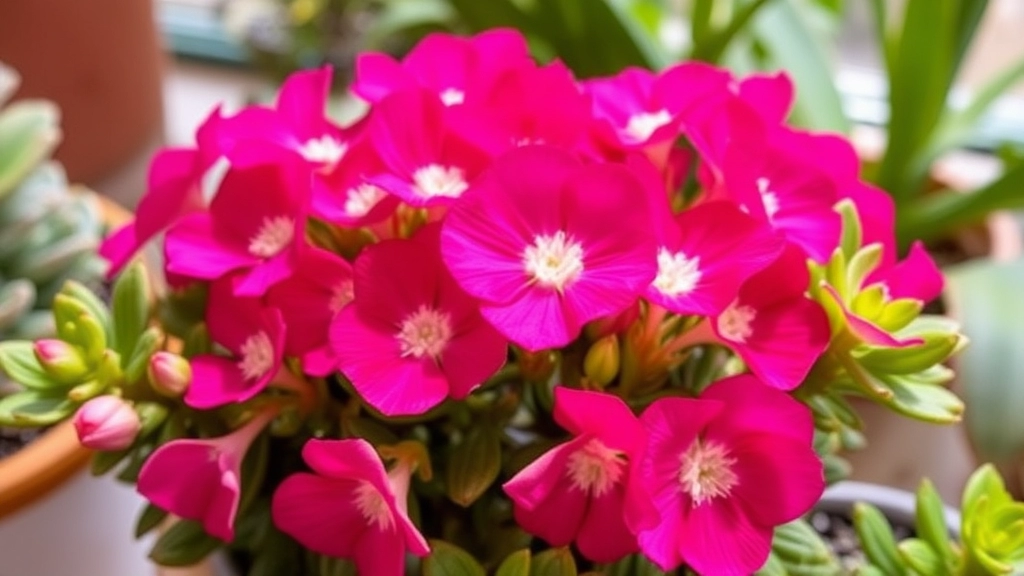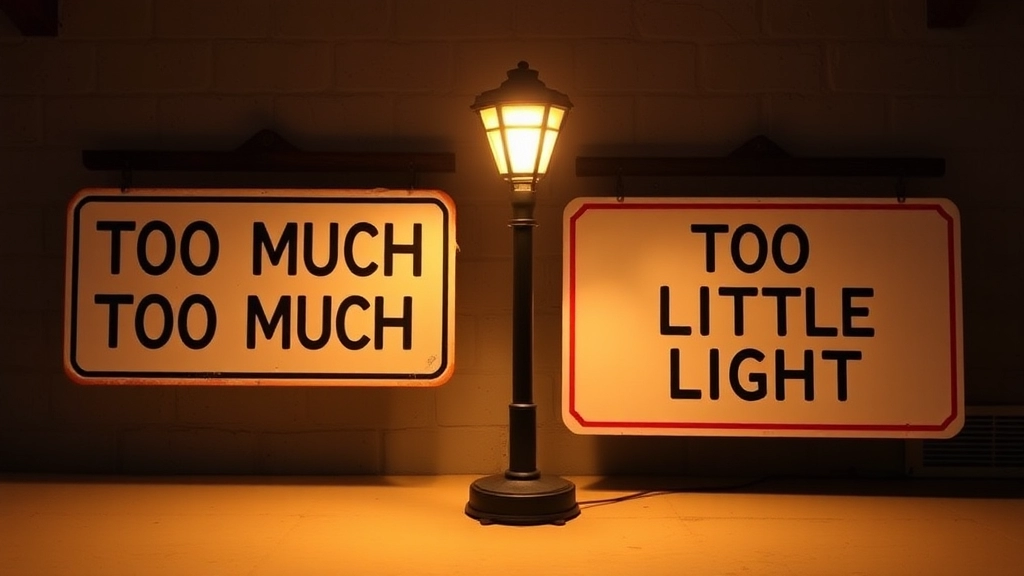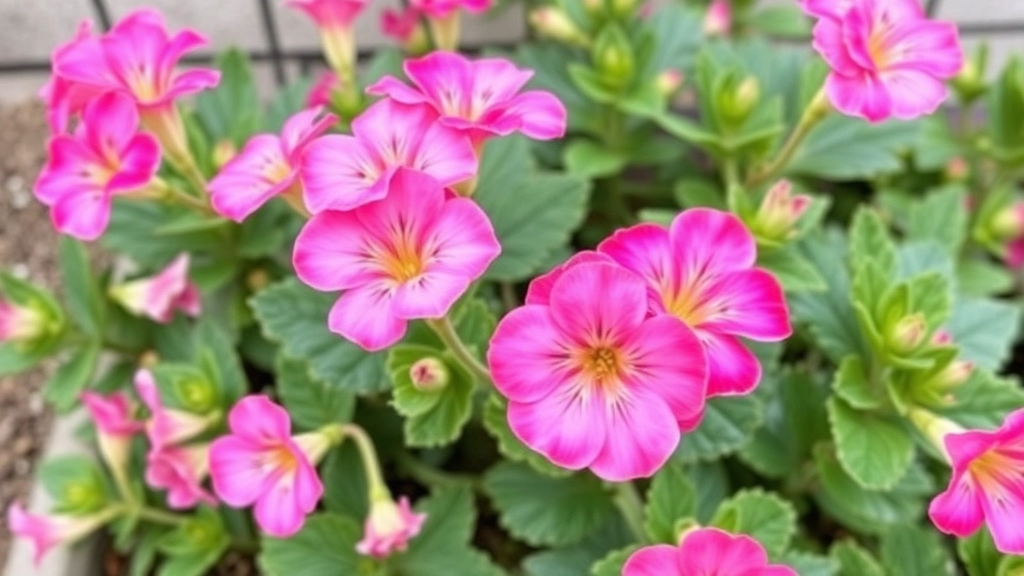Understanding Light Preferences for Kalanchoe
When it comes to growing kalanchoe, understanding whether they thrive in full sun or shade is crucial. Kalanchoe plants are quite adaptable but knowing their light preferences can make a significant difference in their health and growth. So, let’s dive into the essentials of providing the right light conditions for your kalanchoe.
Optimal Light Conditions
Kalanchoe plants generally love bright, indirect light. They do well with direct morning sunlight but can suffer from leaf burn if exposed to intense afternoon sun. In hotter climates, offering some afternoon shade can protect them from excessive heat. For indoor kalanchoe, placing them near a south-facing window or using artificial light can ensure they get the brightness they need without the risk of damage.
Light Preferences of Kalanchoe Plants
When it comes to nurturing Kalanchoe plants, understanding their light preferences is essential. Many plant enthusiasts often wonder, “How much light do Kalanchoes really need?”
Kalanchoe plants thrive in bright environments, making them quite adaptable. Here are some key points to consider:
- Full Sunlight: Kalanchoes flourish in direct sunlight for several hours a day. This exposure promotes vibrant blooms and healthy foliage.
- Partial Shade: While they enjoy sun, Kalanchoes can also tolerate partial shade, especially in extremely hot climates. This balance helps prevent leaf scorch.
- Indoor Lighting: For indoor Kalanchoes, bright, indirect light is ideal. A sunny windowsill can be a perfect spot, but avoid harsh afternoon sun.
Understanding these light preferences will set the foundation for your Kalanchoe’s health. For additional tips on maintaining vibrant blooms, check out our Ultimate Guide to Flowering Kalanchoe Care. If you’re growing Kalanchoes outdoors, our Outdoor Kalanchoe Care Guide provides expert advice for optimal growth.
Full Sunlight: Benefits and Risks

So, you’re thinking about giving your Kalanchoe a sunny spot in your garden or home?
Let’s dive into the benefits and risks of full sunlight for these vibrant plants.
Benefits of Full Sunlight
- Vibrant Growth:
- Kalanchoe plants thrive in bright, direct sunlight.
- This exposure boosts their growth and encourages those stunning blooms.
- Enhanced Colours:
- Full sun can enhance the colours of the leaves and flowers, making them pop even more.
- You’ll notice deeper greens and brighter blossoms.
- Robust Health:
- Sunlight helps prevent pests and diseases.
- A well-lit Kalanchoe is often a healthy one.
Risks of Full Sunlight
But hold on—it’s not all sunshine and rainbows.
- Sunburn:
- Just like us, Kalanchoes can get sunburned.
- If they’re not acclimated, leaves can scorch, turning crispy and brown.
- Water Needs:
- Full sun increases evaporation, meaning your plant might need more water.
- Keep an eye on the soil moisture, as it can dry out quickly.
- Temperature Sensitivity:
- Extreme heat can stress your Kalanchoe.
- If you live in a particularly hot climate, consider some shade during midday.
So, while full sunlight can work wonders for your Kalanchoe, it’s essential to balance it with care.
When considering the optimal light conditions for Kalanchoe plants, many wonder about the role of partial shade.
### Why Partial Shade?
Kalanchoe plants thrive in bright environments, but they can also benefit from partial shade, especially in certain conditions.
– **Protection from Intense Sunlight:** In regions where the sun is particularly harsh, partial shade helps prevent leaf scorch and dehydration.
– **Balanced Growth:** A mix of sunlight and shade can encourage a more balanced growth pattern, promoting healthy foliage and vibrant blooms.
### Ideal Conditions for Partial Shade:
– **Morning Sun, Afternoon Shade:** Placing your Kalanchoe where it receives morning sunlight and afternoon shade is often ideal.
– **Filtered Light:** Areas with dappled sunlight, such as beneath taller plants or structures, can provide the right amount of light without overwhelming the plant.
### Signs Your Kalanchoe Enjoys Partial Shade:
– **Vibrant Leaves:** If the leaves are lush and green, your plant is likely enjoying its light conditions.
– **Consistent Blooming:** Regular flowering indicates that your Kalanchoe is thriving in its environment.
However, too much shade can hinder growth, leading to leggy stems and fewer flowers. For more tips on ensuring your Kalanchoe blooms consistently, check out [how to make your Kalanchoe flower again](https://planthq.org/how-to-make-your-kalanchoe-flower-again/). Additionally, if you’re dealing with specific issues like drooping flowers, you might find useful insights in [why are my Kalanchoe flowers drooping](https://planthq.org/why-are-my-kalanchoe-flowers-drooping-causes-and-fixes/).
Indoor Kalanchoe Light Needs

When considering the optimal environment for indoor Kalanchoe plants, light plays a pivotal role in their health and growth. Many plant enthusiasts often wonder, “How much light does my Kalanchoe really need?”
Kalanchoe plants thrive best when they receive ample light, but striking the right balance is essential. Here are some key points to consider:
- Bright, Indirect Light: Kalanchoe prefers bright, indirect sunlight. A south or west-facing window is ideal, as it provides the necessary light without overwhelming the plant.
- Avoid Direct Sunlight: While Kalanchoe can tolerate some direct sunlight, prolonged exposure can scorch the leaves. It’s crucial to monitor the plant’s response to light levels.
- Rotate Regularly: To ensure even growth, rotate your Kalanchoe every few weeks. This helps all sides of the plant receive adequate light.
- Supplement with Grow Lights: If natural light is limited, consider using grow lights. These can provide the specific light spectrum that Kalanchoe needs to thrive.
- Watch for Signs: Keep an eye on your plant. If the leaves start to stretch towards the light, it may be a sign that it needs more exposure.
Understanding these light requirements will not only enhance the beauty of your indoor Kalanchoe but also ensure its longevity.
Adjusting Light Based on Season and Climate
As we explore the light preferences of Kalanchoe plants, it’s essential to consider how seasonal changes and varying climates impact their light requirements.
Understanding Seasonal Changes
Kalanchoe plants thrive in bright, indirect light but may need adjustments throughout the year. Here’s how to adapt:
- Spring and Summer:
- Longer days mean more sunlight.
- Position your Kalanchoe in a spot where it can receive 6 to 8 hours of light daily.
- Monitor for signs of stress, such as leaf burn.
- Autumn and Winter:
- Days shorten, and light intensity decreases.
- Move your Kalanchoe closer to windows to maximise available light.
- Supplement with grow lights if necessary to maintain growth.
Climate Considerations
The climate in which you live also plays a crucial role in determining the optimal light for your Kalanchoe:
Signs of Too Much or Too Little Light

When it comes to Kalanchoe plants, finding that sweet spot for light can feel like a tricky balancing act.
So, how do you know if your plant is getting too much or too little light?
Here are some signs to keep an eye on:
Signs of Too Much Light:
- Leaf Scorch: If you notice crispy, brown edges on the leaves, your Kalanchoe might be sunburned.
- Faded Colours: Healthy Kalanchoe leaves are vibrant. If they start looking washed out, they could be getting too much direct sunlight.
- Drooping Leaves: Overexposure can lead to stress, causing leaves to droop or wilt.
Signs of Too Little Light:
- Leggy Growth: If your Kalanchoe is stretching towards the light and looking spindly, it’s craving more sunshine.
- Yellowing Leaves: A sign of distress, yellow leaves might mean your plant isn’t getting enough light.
- Slow Growth: If your Kalanchoe seems to be on a go-slow, it might be begging for brighter conditions.
Best Practices for Outdoor and Indoor Placement
When it comes to positioning your Kalanchoe plants, the right placement can make all the difference in their growth and health. You might be wondering how to ensure your plants thrive, whether indoors or outdoors.
Outdoor Placement Tips
- Choose the Right Spot
Look for an area that receives full sunlight for at least 6 hours a day.
Avoid locations with harsh afternoon sun, especially in hotter climates. - Consider Wind Protection
If your outdoor area is windy, placing your Kalanchoe near a wall or hedge can shield them from strong gusts, which may damage the leaves. - Soil Drainage
Ensure the soil is well-draining. Kalanchoe prefer dry conditions, so avoid spots where water tends to pool.
Indoor Placement Tips
- Bright, Indirect Light
Position your Kalanchoe near a window where it can receive bright, indirect light. South or west-facing windows are often ideal. - Rotate Regularly
To promote even growth, rotate your plant every few weeks. This helps all sides receive adequate light. - Avoid Cold Drafts
Keep your Kalanchoe away from cold drafts, such as those from air conditioning or heating vents.
General Considerations
- Monitor Growth
Keep an eye on how your plant responds to its environment. If it stretches towards the light, it may need a brighter spot.
Conversely, if the leaves start to scorch, it may be getting too much direct sunlight. - Seasonal Adjustments
As seasons change, you may need to adjust the placement of your Kalanchoe. In winter, they might require a sunnier spot due to shorter days.
For more detailed guidelines on ensuring your Kalanchoe thrives, check out our Kalanchoe Paddle Plant Care Guide. Additionally, if you notice any unusual signs like leaf curling, refer to our article on Causes and Solutions for Kalanchoe Leaves Curling.
FAQs About Kalanchoe Light Needs
What are the benefits of giving my Kalanchoe full sunlight?
Full sunlight can significantly boost the growth and vibrancy of your Kalanchoe. It enhances the colors of the leaves and flowers, making them more vibrant. Additionally, sunlight helps prevent pests and diseases, contributing to the overall health of the plant.
Are there any risks associated with full sunlight for Kalanchoe plants?
Yes, there are a few risks. Kalanchoe plants can get sunburned if they are not acclimated, leading to crispy and brown leaves. Full sunlight also increases evaporation, so your plant might need more water. Extreme heat can stress the plant, so providing some shade during the hottest part of the day is advisable.
Can I keep my Kalanchoe indoors, and what kind of light does it need?
Yes, Kalanchoe can thrive indoors with the right light conditions. They prefer bright, indirect sunlight, ideally from a south or west-facing window. Avoid prolonged exposure to direct sunlight to prevent leaf scorch. Rotating the plant regularly and using grow lights if natural light is limited can help maintain its health.
How can I tell if my Kalanchoe is getting too much light?
Signs of too much light include leaf scorch, where the edges turn crispy and brown, faded colors, and drooping leaves. These symptoms indicate that your plant might be overexposed to direct sunlight.
What are the signs that my Kalanchoe needs more light?
If your Kalanchoe is experiencing leggy growth, where it stretches towards the light, or if the leaves are yellowing, it may need more light. Slow growth is another indicator that your plant might be craving brighter conditions.
Should I use grow lights for my indoor Kalanchoe?
If natural light is limited, supplementing with grow lights can be beneficial. Grow lights provide the specific light spectrum that Kalanchoe needs to thrive, ensuring your plant gets adequate light even in less optimal conditions.
How often should I rotate my indoor Kalanchoe?
Rotating your Kalanchoe every few weeks ensures that all sides of the plant receive adequate light, promoting even growth and preventing one-sided stretching.
What should I do if my Kalanchoe is showing signs of stress from too much heat?
If your Kalanchoe is stressed from extreme heat, consider providing some shade during the hottest part of the day. Monitoring soil moisture and adjusting watering frequency can also help mitigate heat stress.
References
-
Kalanchoe Light Requirements: How Much Light Does A Kalanchoe Need?
-
How to Grow Kalanchoe Indoors
-
Kalanchoe Plant: How to Grow and Care for Kalanchoe
